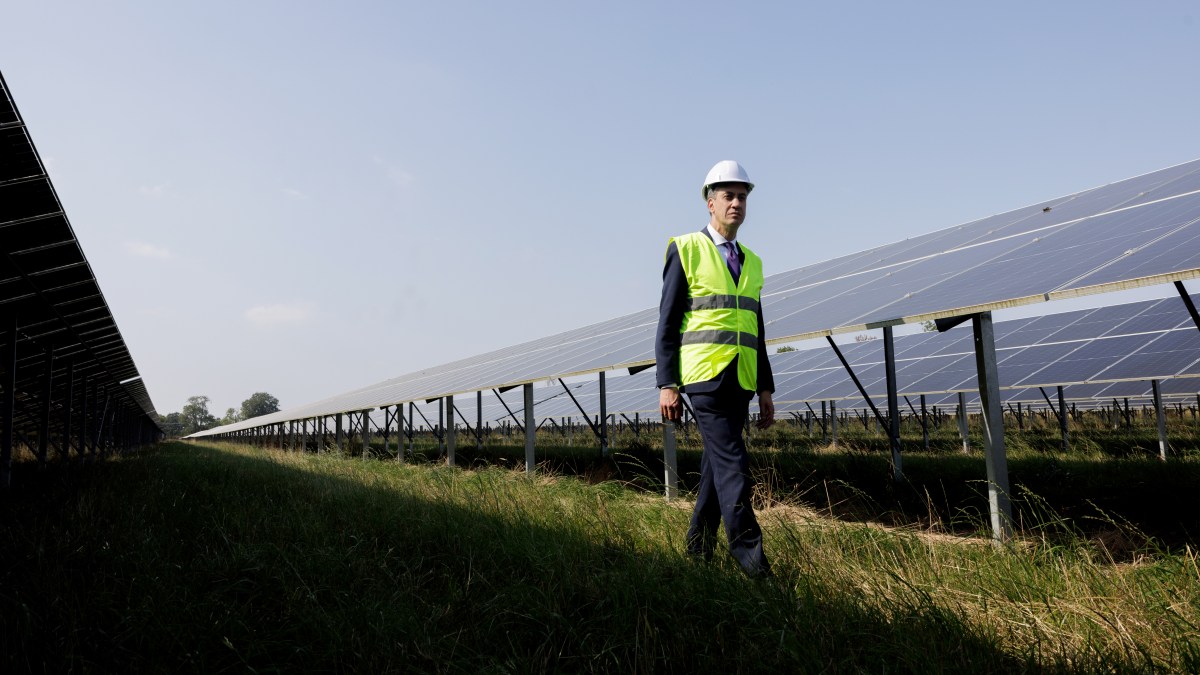For four hours on September 12, as most people slept, Great Britain’s electricity needs were being met by wind turbines spinning, nuclear reactors splitting the atom and other low-carbon sources.
Only five years ago such hourly spells, when clean energy meets 100 per cent of electricity demand, were unheard of. A new analysis has revealed that there have been a record 87 hours where national demand was fully covered by clean sources already this year.
It is a sign of a rapid transformation of the country’s energy system although experts cautioned that Ed Miliband, the energy secretary, was still a “very long way” from meeting his green energy goals. One of Labour’s five “missions” is to deliver a clean power grid by 2030.
• Residents near new wind and solar farms could get bill discounts
A key measure for hitting that goal is clean sources producing at least as much power as Great Britain consumes in total over the year. Northern Ireland has a separate electricity system.
The metric means fossil fuel plants such as gas power stations can be running too, as was the case as Britons slumbered on September 12. Any surplus electricity is exported via subsea cables to France, Norway and other countries.
Analysis by the website Carbon Brief found that there had been 87 hours meeting the measure as of September 25. In 2021 there were only 2.5 hours. In the three years since, the average has been about 70 hours.
“Don’t forget that in 2015, when the Conservative government pledged to phase out coal power, Great Britain’s grid hadn’t even managed its first hour without the fuel,” Simon Evans, senior policy editor at Carbon Brief, said.
The country’s last remaining coal power station was closed in 2024. “The rapid coal phaseout shows how quickly the nation’s electricity system is changing. While these periods with 100 per cent of demand covered by clean power would have seemed unthinkable, even a few years ago, they will be an increasingly frequent feature in the future,” Evans said.
Britain’s 9,200 onshore wind turbines and another 2,900 offshore are the bedrock of 2025’s clean hours. During this year’s 87 hours, wind power contributed an average of 72 per cent of electricity demand. Nuclear power came second, with the nation’s nine reactors providing 18 per cent of demand.
Another 10 per cent came from solar power, which has seen a record year thanks to sunny weather, new installations on existing homes and a growing share of new homes with solar panels. Solar is expected to get a further boost as it is mandated on almost all new homes.
However, despite the rapid move towards low-carbon energy, 87 hours is still a tiny fraction of the year: 1.3 per cent. “We’re clearly a very long way from meeting the government’s clean power 2030 targets,” Evans said.
Miliband said: “Every second, hour and day the country runs on clean power, the closer we get to protecting the British people from energy bill price shocks caused by our dependence on volatile fossil fuels.
“We are working tirelessly to take back control of our energy system with clean, homegrown power, so we can get bills down for good.”
The energy secretary, who will address the Labour Party conference on Wednesday, is preparing a “warm homes plan”, expected to be published next month. Officials will be forced to publish a new plan for meeting the country’s carbon targets in October, after the last government lost a legal challenge by environmental groups.
The government is hoping to accelerate the construction of pylons and energy infrastructure with its planning reforms. Miliband will also be hoping a government auction for clean power contracts later this year yields a good number of new offshore windfarm plans.
